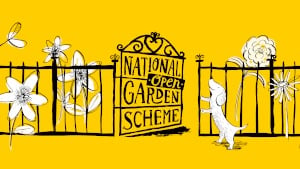About Honington Hall
In the medieval period the manor of Honington belonged to Coventry Priory, and at the Reformation was acquired by Robert Gibbes. In about 1670 Honington was sold to Henry Parker, a lawyer, who built the present house in 1682, and later inherited a baronetcy. Sir Henry Parker was succeeded by his grandson, who in 1741 sold the estate to Joseph Townsend for £32,000. In 1737 Townsend had married an heiress and was in a position to make extensive alterations to the interior of the house. In the 1740s and 1750s the formal gardens were removed in favour of a softer landscape scheme with the advice of Sanderson Miller of Radway Grange.
The estate passed by descent through the Townsend and Skipwith families and in 1924 was sold to Sir Charles Wiggin, whose grandson is the present occupier. The 1970s saw a comprehensive restoration of the house.
The church, which is contemporary with the house, contains fine plasterwork monuments to a number of the owners from the Parker and Townsend families.
The Approach
Honington Hall is situated about 2km north of Shipston-on-Stour. The River Stour flows through the site immediately to the west of the Hall on a course which reflects human intervention over the years.
A minor turning off the Oxford road passes along the boundary of the south park before crossing the late 17th century Honington Bridge, an ornamental, triple-arched structure with ball finials on its parapets. The house can be seen from this point. The entrance to the grounds is flanked by a pair of late 17th century stone piers ornamented with swags and a cherub’s mask.
The drive swings round and eventually the Hall comes into sight. Various species of tree have been planted, mostly to the left. Chestnuts, oak and sitka spruces are prominent along with one or two less common forms.
Passing along the south side of the east lawn, the drive passes the parish church on the left and reaches a gravelled area below the east façade of the Hall. To the north of the Hall, a large gravelled yard is enclosed to the east by the 17th century stables and to the north-east by a brick granary of earlier date.
The Hall (not open for NGS)
The house is of two storeys with attic dormers set in a slate roof. Constructed in the Carolean style in mellow red brick, the house is ornamented with busts of Roman emperors set in niches above the ground-floor windows. The interior of the Hall is embellished with mid-18th century Rococo plasterwork of the finest quality.
The gardens in general
The formal gardens lie mainly to the south and south east of the Hall, with informal planting to the east and west. At one time the area to the west of the River Stour contained several features in the fashionable Rococo style adopted both for the interiors and the gardens – a cascade, a Chinese temple, and a grotto – but little of this now remains.
The gardens to the south of the house date from the 19th century. Frederick Townsend, a noted amateur botanist, inherited Honington in 1873 and was responsible for many of the mature trees which are such a feature of the garden today. The space is generally uncrowded, so trees can grow to a size which reveals their full character. Several species are prominent across the whole garden, notably yew and Lawson cypress in various forms.
Another highlight is the view down to the river and across to the water meadows on the other side.
The east front
To the east, in front of the Hall, is a large area of lawn. This is enclosed by evergreen shrubbery to the north and by similar shrubbery to the south which screens the churchyard. To the east the garden area is bounded by a service drive and metal estate fencing which allows views across the adjacent park. Just to the north east an 18th century stone urn stands on a tall stone pedestal.
The gardens to the south
For the best view we go through an arched gateway at the south-east corner of the forecourt. There we reach a mid-18th century loggia standing on a balustraded, stone-flagged terrace. It overlooks a late-19th century formal garden comprising four geometric, yew-hedged enclosures, each containing a panel of lawn. At the intersection of the grass walks between the yew enclosures, an 18th century stone fountain stands in a circular pool. A gravel walk runs below the south terrace, leading to the area to the west of the Hall, while a further walk follows the western boundary of the churchyard, which is here screened by a row of mature limes, possibly planted in the 1750s. This walk extends south east from the Hall to reach an early 18th century column sundial.
In the centre of the lawn are two incense cedars (calocedrus decurrens), the first of which is one of the largest in the country. This North American tree was introduced into cultivation in 1853 and was quite widely planted at first but then became unfashionable. Immediately behind the tall specimen is an Indian bean tree (catalpa bignonioides).
To the south of the churchyard is a further area of formal garden known as the Italian Garden. Here a small, early 19th century classical portico supported by Doric columns stands against the west end of the churchyard wall. The lawn to the south is laid out with a symmetrical arrangement of two groups of four clipped domes of golden yew. These frame a pair of 18th century stone urns. To the east a stone stepped circular base supports four stone columns and is partly concealed by a western red cedar (thuja plicata). On one side is a Voss’s laburnum.
Lawns planted with specimen trees, including magnolia, slope down to the river. At the end is a turkey oak and a large and spreading Japanese angelica tree (aralia elata).
On the west side, walking back towards the house along the river, the trees include tulip tree, weeping ash, rowan, and water-loving species such as willow and alder.
The west facade
The terraced façade gives on to an area of lawn which slopes down steeply to the river and which is planted with specimen trees. On the north side is a Georgian style portico from the 1840s, flanked by a pair of 18th century stone recumbent figures.
The dominant trees near the house are mature cedar of Lebanon. Further down are an English oak and a fine Norway spruce (picea abies), both standing alone. At the far end the planting is dense and includes pencil cedars (juniperus virginiana), which are uncommon, as well as silver maple.
To the north there is a further area of lawn leading down to a field. The boundary is marked by a Berlin poplar (populus x berolinensis), another tree once popular but now little seen.
All in all, the mature character of the planting and the riverside setting give the garden a restful and truly English feel – one which matches the house very well.

.jpg)



.jpg)
.jpg)
.jpg)
.jpg)